Last updated on
Explore innovative alternatives to traditional office chairs that can help alleviate back pain and enhance your comfort throughout the workday.
Sitting in an office chair for long hours can be a real pain in the back. Literally.
If you’re one of the many people who suffer from back pain due to prolonged sitting, you know just how frustrating it can be to find relief. The good news is that there are alternatives to traditional office chairs that can help alleviate your discomfort and improve your posture.
In this article, we’ll explore some of the best office chair alternatives for back pain that won’t break the bank. Whether you work from home or in a traditional office setting, these options are worth considering if you want to sit comfortably and work efficiently without sacrificing your health and well-being.
So let’s dive in!
Understanding Back Pain
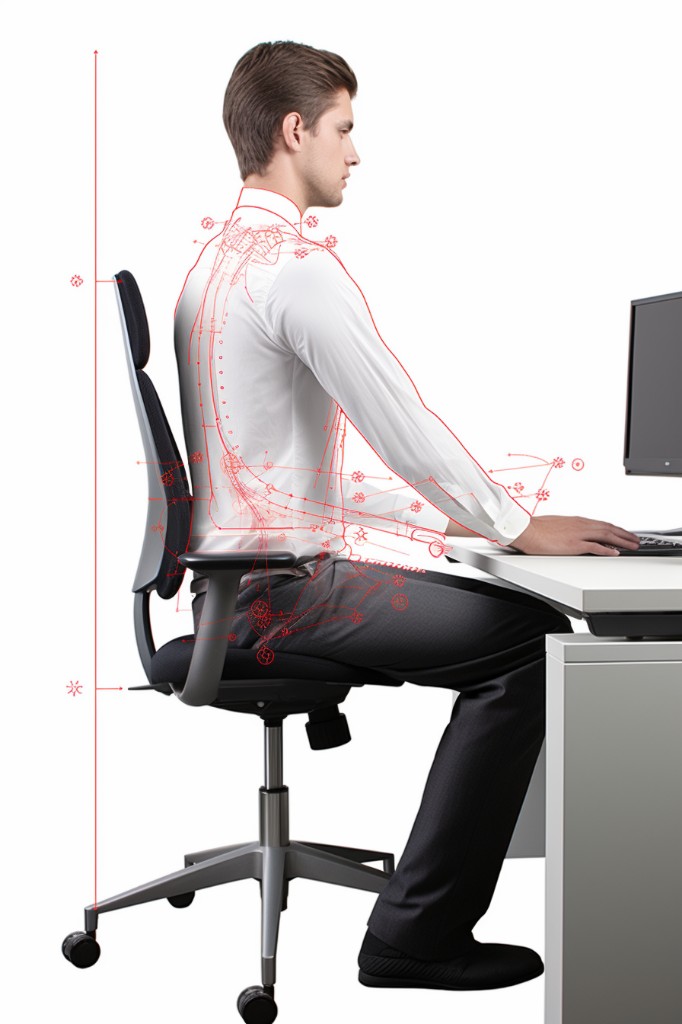
Back pain is a common ailment that affects millions of people worldwide. It can be caused by a variety of factors, including poor posture, muscle strain or injury, and degenerative conditions such as arthritis.
When it comes to back pain at work, prolonged sitting in an office chair is often the culprit. Sitting for long periods puts pressure on your spine and can cause discomfort in your lower back muscles.
Understanding the causes of back pain is essential if you want to find effective ways to alleviate it. In many cases, making simple changes like adjusting your posture or using an ergonomic office chair alternative can make all the difference.
Causes of Back Pain At Work

One major cause is poor posture, which puts unnecessary strain on the muscles and ligaments in your back. Sitting for long periods without taking breaks to stretch or move around can also contribute to back pain.
Another factor that contributes to back pain at work is using an unsupportive chair or workstation setup. Traditional office chairs often lack the necessary lumbar support needed for proper spinal alignment, leading to discomfort over time.
Repetitive motions such as typing on a keyboard or using a mouse can lead to muscle fatigue and tension in the neck and shoulders that radiates down into the lower back.
The Risks of Sitting for Long Hours

When we sit for extended periods, our muscles become inactive and our circulation slows down. This can lead to a range of problems such as poor posture, back pain, neck strain and even more serious conditions like heart disease and diabetes.
Research has shown that people who sit for prolonged periods are at higher risk of developing chronic diseases than those who don’t. In fact, studies suggest that sitting too much is just as bad for your health as smoking! That’s why it’s essential to take regular breaks from sitting throughout the day.
If you work in an office environment where most tasks require you to be seated at a desk or computer all day long – then it’s important to find ways of breaking up this sedentary lifestyle by incorporating movement into your daily routine.
Importance of Proper Posture

When we sit for long periods, it’s easy to slouch or hunch over our desks, which can put unnecessary strain on our spine. Over time, this can lead to chronic back pain that affects not only our work but also our quality of life.
To maintain proper posture while sitting at your desk, make sure your feet are flat on the floor with your knees bent at a 90-degree angle. Your hips should be level with or slightly higher than your knees to avoid putting pressure on the lower back.
Your chair should support both your lower and upper back while allowing you to keep both feet flat on the ground comfortably. Adjusting armrests so they’re level with or slightly below elbow height will help prevent shoulder tension from creeping up into neck muscles.
Traditional Office Chairs: The Culprit?
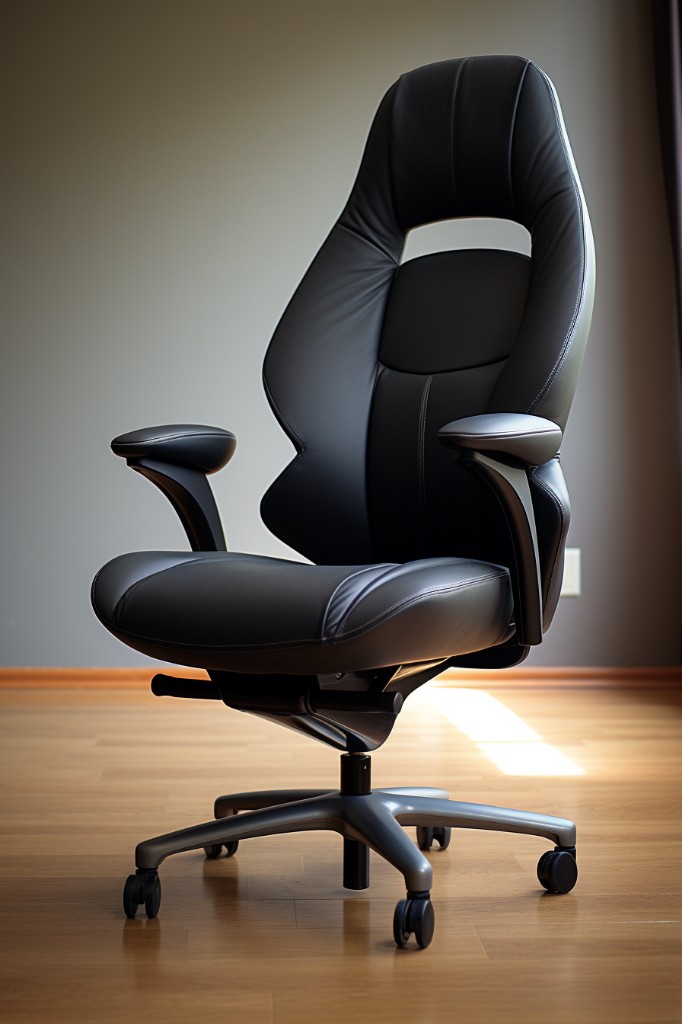
They are comfortable, adjustable, and come in a variety of styles to fit any workspace. However, they may not be the best choice when it comes to preventing or reducing back pain.
The problem with traditional office chairs is that they often lack proper lumbar support and encourage poor posture. When you sit in a chair without adequate lower back support, your spine can curve unnaturally over time leading to discomfort or even chronic pain.
Moreover, sitting for long periods of time puts pressure on your spinal discs which can cause them to compress unevenly leading again to discomfort or chronic pain.
While traditional office chairs may seem like an obvious choice due their popularity and availability at most workplaces; it’s important not only consider comfort but also ergonomics when selecting an appropriate chair for work purposes.
Dangers of the Wrong Office Chair

Poor posture, lack of support, and inadequate adjustability are just a few factors that can contribute to back pain and other musculoskeletal disorders. When you sit for long periods without proper support, you put unnecessary strain on your spine and muscles.
This can lead to chronic pain, fatigue, reduced productivity at work or even worse – serious medical conditions such as herniated discs.
Moreover, traditional office chairs often have limited adjustability options which means they may not fit everyone’s body type properly leading to discomfort or even injury over time.
It is essential that we take our seating arrangements seriously because it affects our overall well-being in the long run.
The Role of Ergonomics in Reducing Back Pain
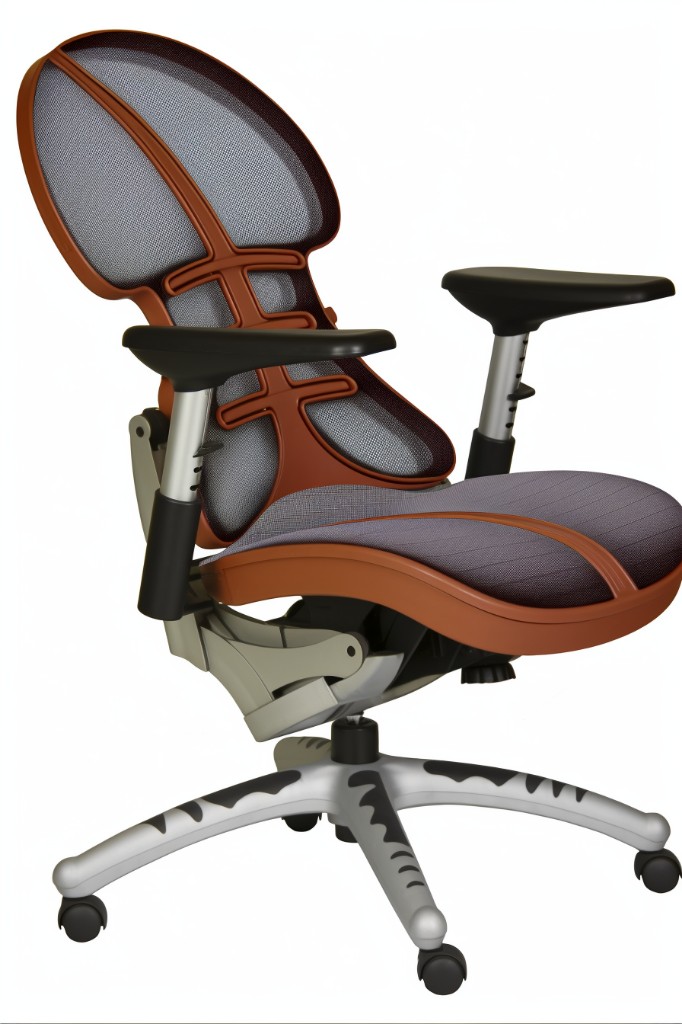
When it comes to office chairs and back pain, ergonomics plays a crucial role in reducing discomfort. A well-designed ergonomic chair can help you maintain proper posture while sitting for long periods of time by providing support where you need it most.
One important aspect of an ergonomic chair is adjustability. The ability to adjust the height, armrests, lumbar support, seat depth and tilt angle allows users to customize their seating position according to their body type or preference.
Another key feature is adequate lumbar support which helps maintain the natural curve of your spine while seated. This reduces pressure on your lower back muscles which can cause pain over time.
In addition to these features found in traditional office chairs with good ergonomics design principles applied; there are also alternative options such as kneeling chairs or yoga balls that promote active sitting positions instead of passive ones like those offered by traditional desk chairs.
Features Your Office Chair Needs for Back Support

If you’re looking for a chair that will provide adequate back support and help alleviate pain, there are certain features you should look out for. First and foremost is adjustable lumbar support.
This allows you to adjust the height of the backrest so that it fits snugly against your lower back, providing much-needed support where it’s needed most.
Another important feature is adjustable armrests. These allow you to position your arms at a comfortable angle while typing or using the mouse, reducing strain on your shoulders and neck.
Seat depth adjustment is also crucial in ensuring proper posture while sitting at workstations for long hours as this helps prevent slouching which can lead to discomfort over time.
Consider investing in an office chair with a tilt function or recline option – this allows you to shift positions throughout the day without sacrificing comfort or productivity.
Common Office Chair Alternatives
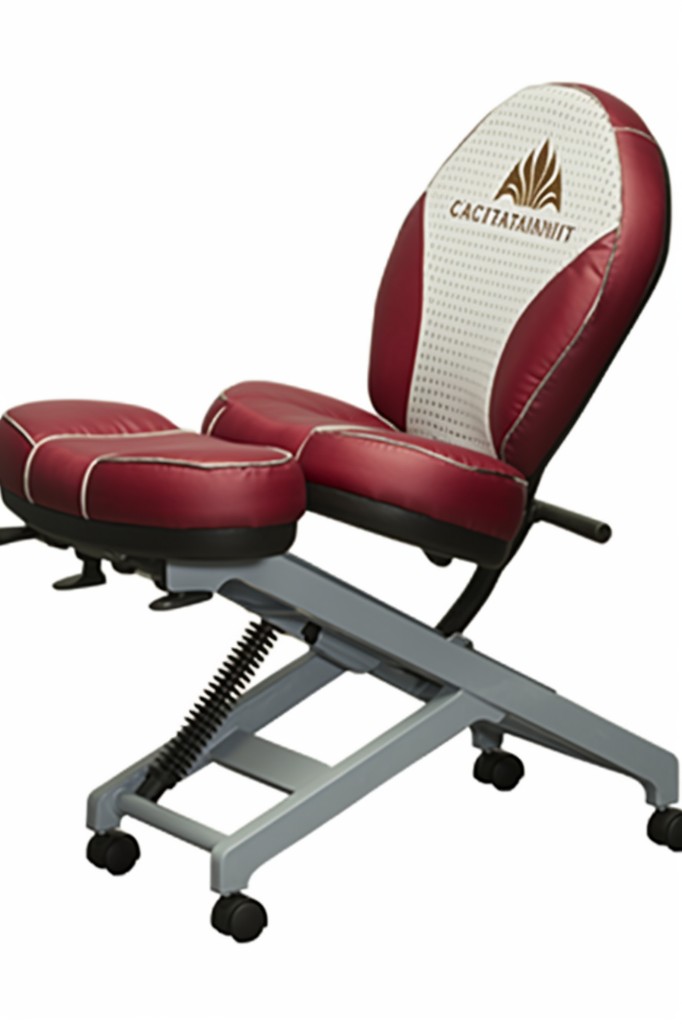
One popular choice is the exercise ball chair, which can help improve your posture and core strength while you work. Another option is the kneeling chair, which encourages proper spinal alignment and reduces pressure on your lower back.
For those who prefer standing over sitting all day long, adjustable height desks or stand-up desk converters may be worth considering. These allow you to switch between sitting and standing positions throughout the day.
Other alternatives include under-desk bikes that let you pedal while working at your desk or anti-fatigue mats that provide cushioning for those who stand for extended periods of time.
When choosing an office chair alternative, it’s important to consider factors such as comfort level, adjustability features (such as seat height), durability and ease of use. It’s also essential to ensure that any new seating arrangement provides adequate support for your back in order to prevent further pain or discomfort down the line.
The Standing Desk Advantage
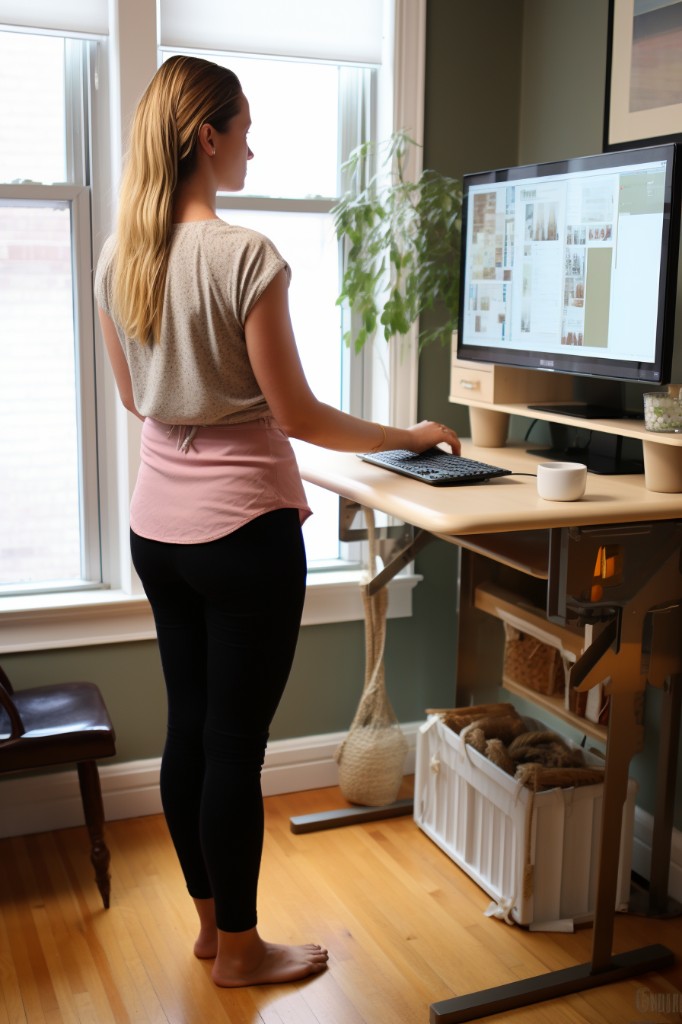
This option allows you to work while standing up, which can help alleviate pressure on your lower back and improve circulation throughout your body. In fact, studies have shown that using a standing desk can reduce discomfort caused by prolonged sitting and even boost productivity.
However, it’s important to note that using a standing desk isn’t a one-size-fits-all solution. It’s crucial to find the right balance between sitting and standing throughout the day in order to avoid fatigue or strain on other parts of your body such as feet or legs.
If you’re considering investing in a stand-up workstation, make sure it has adjustable height settings so you can switch between sitting and standing positions easily. You may also want to invest in an anti-fatigue mat designed specifically for use with stand-up desks; this will provide cushioning underfoot while reducing stress on joints.
Using Adjustable Desks for Better Posture
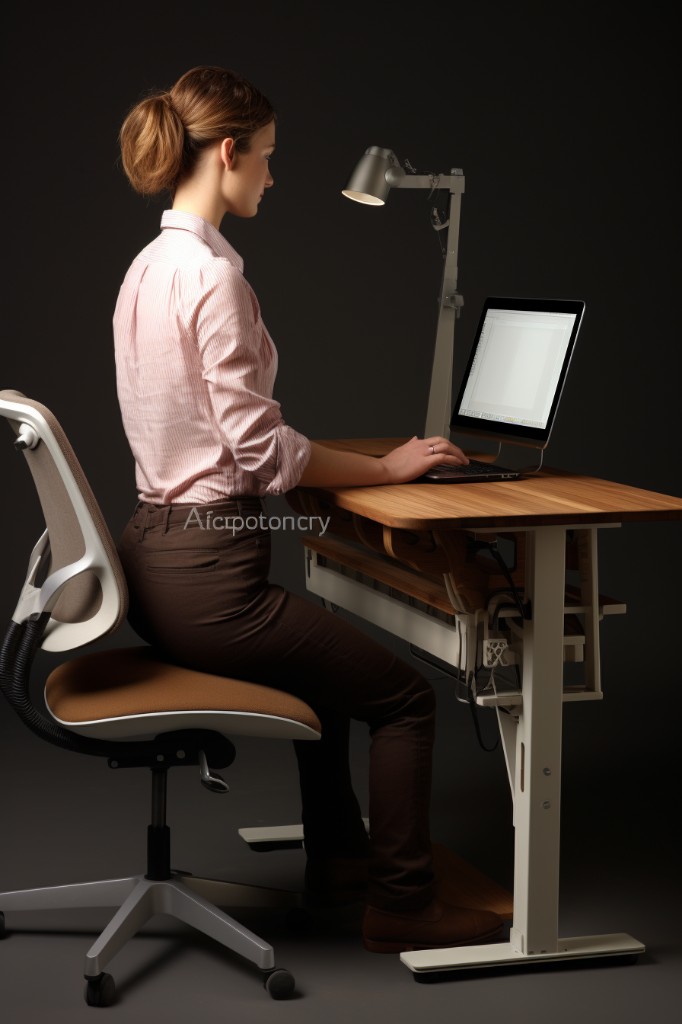
These desks allow you to switch between sitting and standing positions throughout the day, which can help alleviate pressure on your spine and promote better circulation.
When using an adjustable desk, it’s important to make sure that your monitor is at eye level when you’re sitting or standing. This will help prevent neck strain and ensure that you’re not hunching over or craning your neck in order to see the screen.
It’s a good idea to invest in an anti-fatigue mat if you plan on standing for extended periods of time. These mats provide cushioning for your feet and legs, which can reduce fatigue and discomfort.
Using an adjustable desk may take some getting used to at first, but many people find that they feel more energized throughout the day when they have the ability to switch up their position as needed.
Harnessing the Benefits of a Yoga Chair
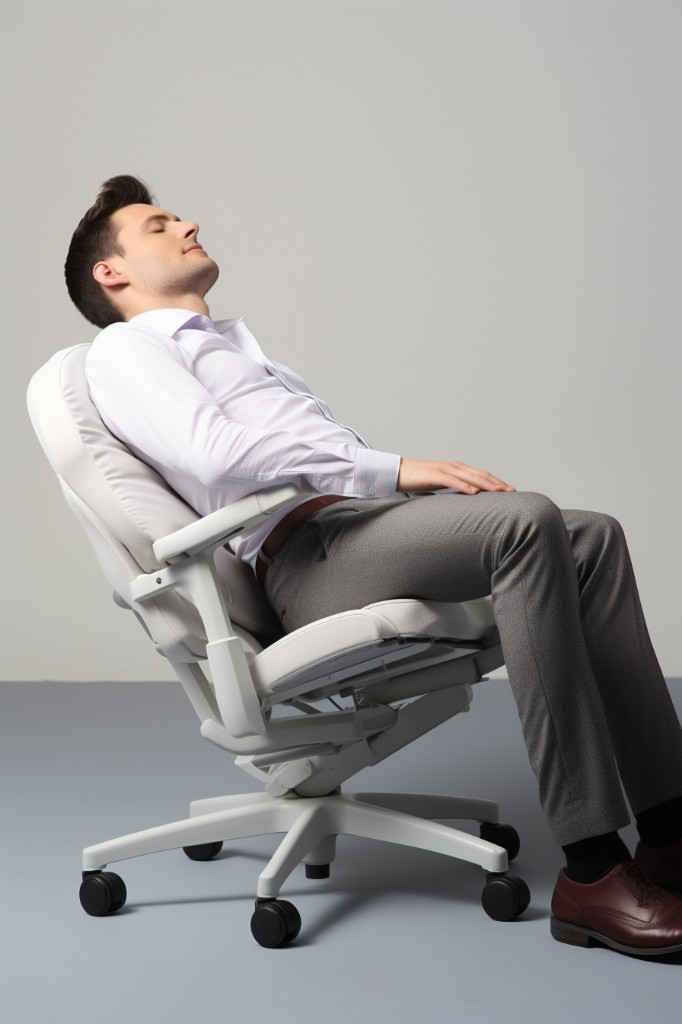
These chairs are designed with yoga principles in mind, which means they encourage active sitting and engage your core muscles while you work.
The unique design of a yoga chair allows for greater flexibility and movement than traditional office chairs. They typically have no backrest or armrests, which forces you to sit up straighter and engage your core muscles for support.
This can help alleviate pressure on your lower back by distributing weight more evenly throughout your body.
One popular type of yoga chair is the balance ball chair. It features an exercise ball as its seat cushion that helps promote better posture by engaging the user’s abdominal muscles while sitting at their desk.
While some people may find it challenging to adjust initially due to its unconventional design, many users report feeling more energized after using a yoga chair regularly compared with traditional seating options.
Understanding Discomfort in Office Chair Alternatives

Some people may experience discomfort or even pain when using certain types of alternative chairs. This is because these chairs often require you to sit in a different position than you’re used to, which can put strain on different parts of your body.
For example, some people find that kneeling chairs cause discomfort in their knees or shins after prolonged use. Others may find that standing desks lead to foot and leg fatigue if they don’t have proper support underfoot.
It’s important to listen carefully and pay attention when trying out new office chair alternatives so you can identify any areas where you feel uncomfortable or strained. If something doesn’t feel right, try adjusting the height or angle of the chair until it feels more comfortable.
The Benefits of Squatting At Work
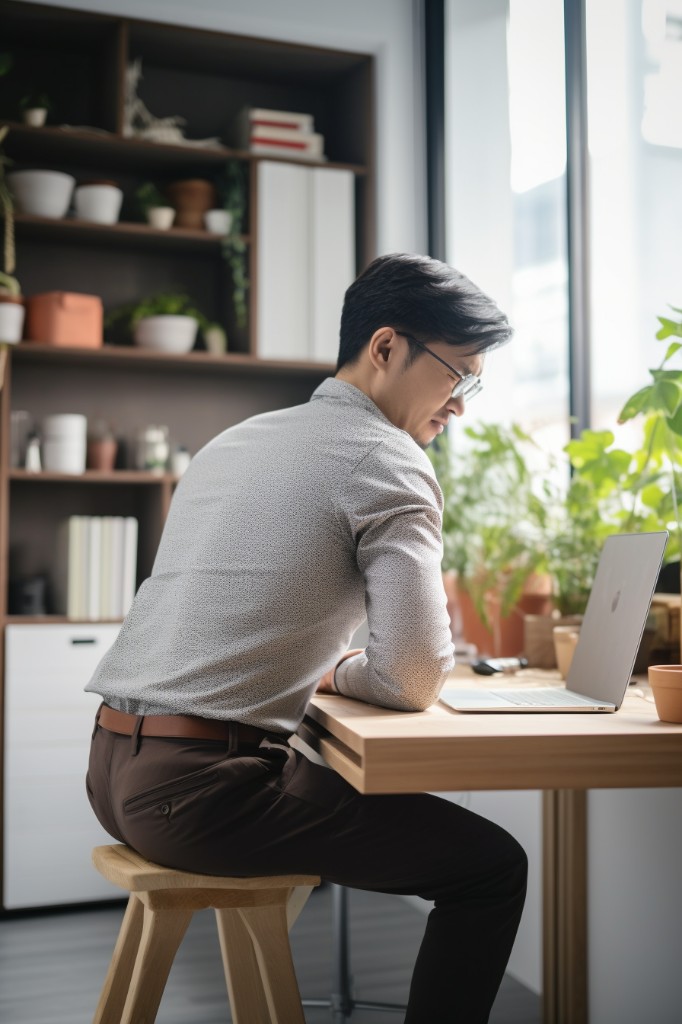
It involves bending your knees and lowering your hips to rest on your heels, with your feet flat on the ground. Squatting can be an effective way to reduce back pain caused by sitting for long periods of time.
When you squat, you engage more muscles than when you sit in a chair. This increased muscle activity helps improve circulation and reduces stiffness in the lower back and legs.
Squatting also promotes better alignment of the spine, which can help alleviate pressure on nerves that cause pain.
One way to incorporate squatting into your workday is by using a low stool or ottoman under your desk as an alternative seat option. When seated at this height, it’s easy to transition from sitting upright with both feet flat on the floor into a comfortable squat position whenever needed.
Worker’s Workout: The Under-Desk Bike
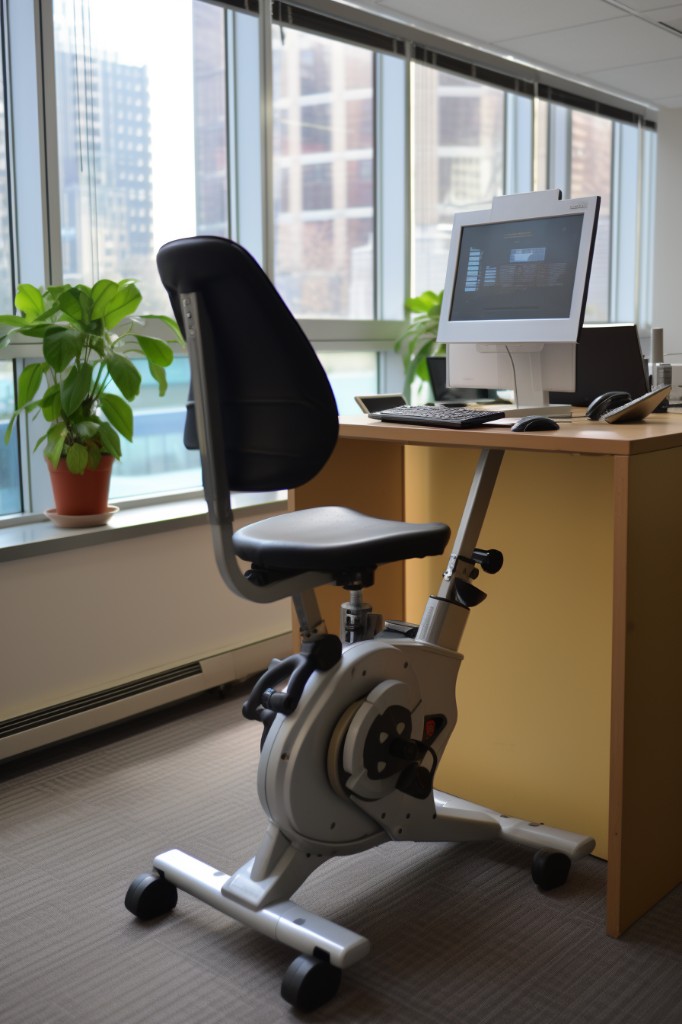
These compact exercise machines fit easily under your desk and allow you to pedal away while typing or taking calls. Not only does this help keep your blood flowing and reduce the risk of back pain, but it can also boost productivity by keeping your mind alert.
Under-desk bikes come in various shapes and sizes, so it’s important to choose one that fits comfortably beneath your workspace. Some models even come with adjustable resistance levels so that you can customize the intensity of your workout.
While using an under-desk bike may not replace traditional exercise routines entirely, incorporating one into your workday is a great way to sneak in some extra activity without sacrificing productivity or comfort.
Stand Up Desk Converter: A Tall Solution

These devices allow you to convert your traditional sitting desk into a standing one, giving you the option of working while standing up. This can help alleviate pressure on your lower back and promote better circulation throughout the body.
Stand-up desk converters come in various shapes and sizes, but most are designed to sit on top of an existing work surface. They typically feature adjustable height settings that allow users to customize their workstation according to their needs.
One advantage of using a stand-up desk converter is that it allows for easy transitions between sitting and standing positions throughout the day. This can help prevent stiffness or discomfort from prolonged periods spent in either position.
However, it’s important not to overdo it when using this type of device as too much time spent standing can also lead to fatigue or strain on other parts of the body such as feet or legs. It’s recommended that users alternate between sitting and standing every 30 minutes or so for optimal results.
Anti Fatigue Mats: Standing in Comfort

These mats are designed to provide cushioning and support for your feet, legs, and lower back while standing. They can help improve circulation and reduce fatigue caused by prolonged standing.
Anti-fatigue mats come in various sizes and materials such as rubber or foam. Some even have built-in features like massage balls or raised bumps that stimulate blood flow through the feet.
While anti-fatigue mats won’t replace a good office chair entirely, they can be an excellent addition to any workspace where people stand frequently throughout the day. They’re especially useful if you use a sit-stand desk since they’ll make it more comfortable when transitioning from sitting to standing positions.
Zero Gravity Workstations: Floating Towards Health
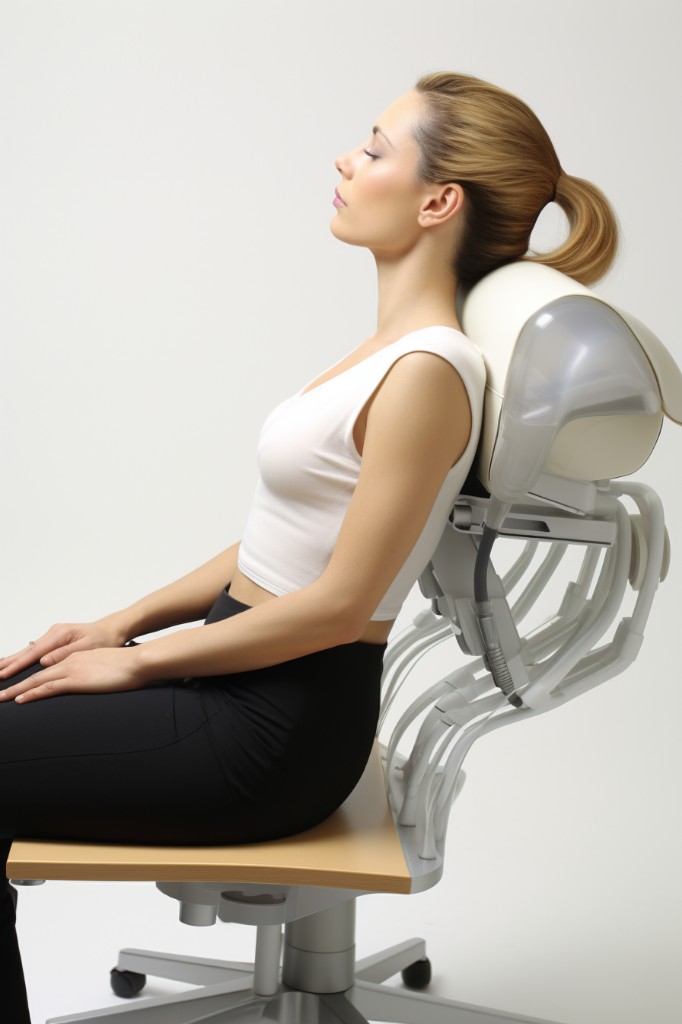
These workstations allow you to recline at an angle that mimics the position of astronauts during takeoff, which reduces pressure on your spine and joints. This posture helps improve circulation, reduce muscle tension and alleviate back pain.
The zero-gravity workstation is designed with ergonomics in mind, providing support for your entire body while you work. The chair’s design allows for easy adjustments to ensure maximum comfort throughout the day.
While these chairs may seem like a luxury item reserved only for high-end offices or home studios, they can be surprisingly affordable if you know where to look. Many online retailers offer zero-gravity chairs at reasonable prices without sacrificing quality or durability.
Benefits and Drawbacks: Pros and Cons of Chair Alternatives
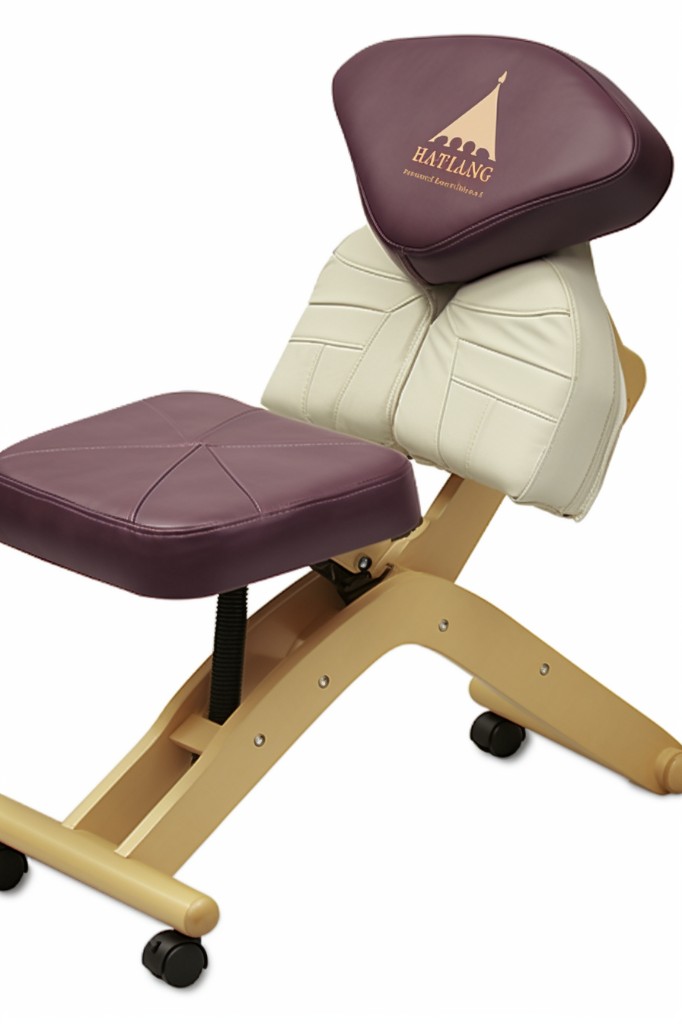
It’s important to consider these factors before making a decision on which alternative is right for you.
One of the biggest advantages of using an office chair alternative is that it can help alleviate back pain caused by prolonged sitting. Many options, such as standing desks or under-desk bikes, encourage movement and better posture throughout the workday.
This can lead to improved circulation and reduced strain on your back muscles.
However, some alternatives may not be suitable for everyone or every type of work environment. For example, standing desks may not be ideal if you have joint problems in your legs or feet; while yoga chairs might not provide enough support for those who need extra lumbar support.
It’s also worth noting that some office chair alternatives come at a higher cost than traditional chairs – especially high-end models like zero-gravity workstations – so budget constraints should also be taken into account when considering these options.
Ultimately, finding the right office chair alternative depends on individual needs and preferences.
Finding Your Perfect Office Chair Alternative
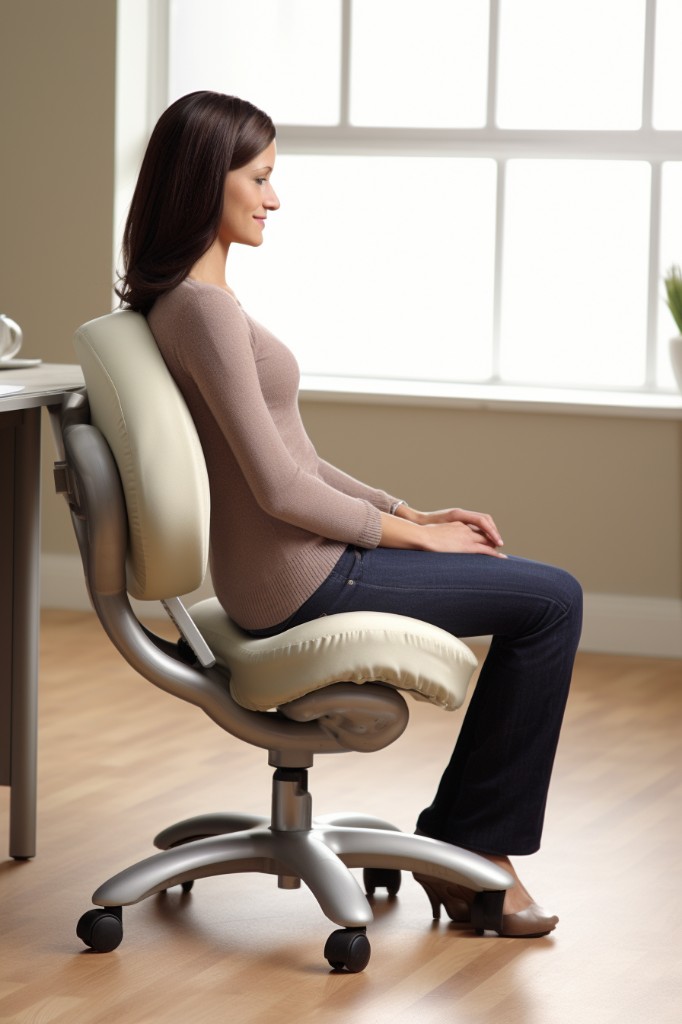
The truth is that there’s no one-size-fits-all solution when it comes to finding the perfect office chair alternative. It all depends on your individual needs and preferences.
To find your ideal option, start by considering what type of work you do and how much time you spend sitting each day. If your job requires a lot of typing or computer work, an adjustable standing desk converter might be a good choice to help reduce strain on your back while allowing for movement throughout the day.
If standing isn’t an option or if it causes discomfort in other areas such as feet or legs, consider trying out anti-fatigue mats designed specifically for use with standing desks.
For those who prefer more traditional seating options but still want relief from back pain caused by prolonged sitting periods can try yoga chairs that promote proper posture while providing comfort during long hours at work.
Ultimately, finding the perfect office chair alternative will require some trial and error until you discover what works best for both comfort and productivity levels. Don’t hesitate to experiment with different options until you find something that feels just right!
FAQ
What is the alternative seating for lower back pain?
The alternative seating for lower back pain is a kneeling chair, which is designed to shift body weight to the shins and knees and place the spine in a more neutral position, thereby reducing lower back pressure.
What helps back pain from sitting at desk?
To help alleviate back pain from sitting at a desk, it is recommended to take short breaks and switch positions every 15 minutes, stand up and stretch, or get a water or coffee refill.
What chair takes pressure off the spine?
The chair that takes pressure off the spine is the Spinal Decompression Chair.
What types of exercise equipment can double as office seating to alleviate back pain?
Stability balls and balance stools are types of exercise equipment that can double as office seating to alleviate back pain.
How can someone modify their workstation setup to alleviate back pain?
To alleviate back pain, someone can modify their workstation setup by adjusting the height and position of their chair, monitor, keyboard and mouse for optimal ergonomics, and taking regular breaks to stretch and move around.
Are there specific chair designs or models recommended for individuals with chronic back pain?
Ergonomic chairs with features like lumbar support, adjustable seats and armrests are often recommended for individuals with chronic back pain.
Recap




